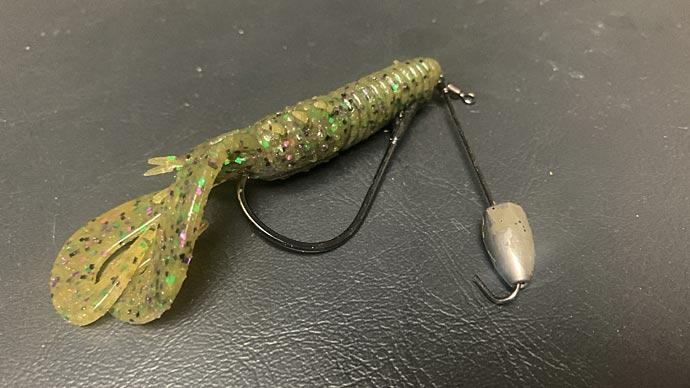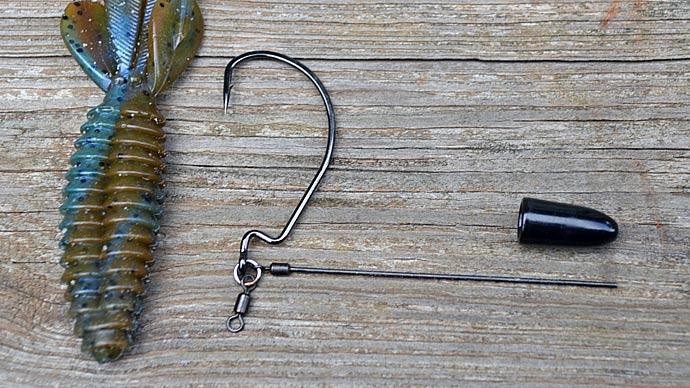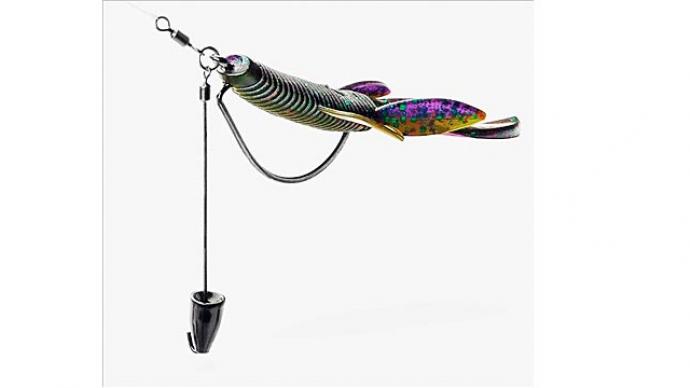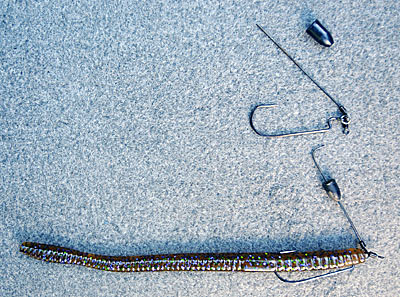
Touring pro Casey Scanlon’s affinity for the drop shot rig has made it an easy transition for him to start fishing a Tokyo rig.
“I have always loved to drop shot, and it is one of those rigs I reach for when things get tough,” Scanlon says. The Missouri touring pro and guide admits he is still learning to use the Tokyo rig, but he notices its similarities to the drop shot rig.
The Tokyo rig combines welded o-ring construction, steel swivels, a hook, and dropper wire for holding a weight. “It is similar to a drop shot which is one of the most effective rigs for all seasons,” Scanlon says. “There is just something about the weight being below the bait that adds a little bit of extra action to the bait. “
“The Tokyo rig is more of a power drop shot because you can fish it on heavier line and different gear, and you can fish it around a lot heavier cover,” Scanlon says. “I can put it on a baitcaster and flip it behind docks or drag it out deep.“
The MLF Tour pro notes the rig is also more compact, making it easier to cast than a drop shot with its longer drop line. Scanlon notices the Tokyo rig with the shorter drop wire snags less than a drop shot rig in rocks, but its only drawback is he can lose the whole rig when it hangs up rather than just losing the weight when he snags the drop shot rig.
The dropper wire on the Tokyo rig allows Scanlon to quickly change to a heavy or light weight depending on how deep or shallow he wants to fish. “Just like with a drop shot, you can carry a handful of weights in your pocket, and depending on the cover you are fishing or how deep you are fishing, you can switch out that weight super-fast and easy with a pair of pliers,” Scanlon says.
Scanlon attaches a light weight on the Tokyo rig when he wants to catch suspended bass for a slower fall. He adds a heavier weight for dragging the rig along the bottom.
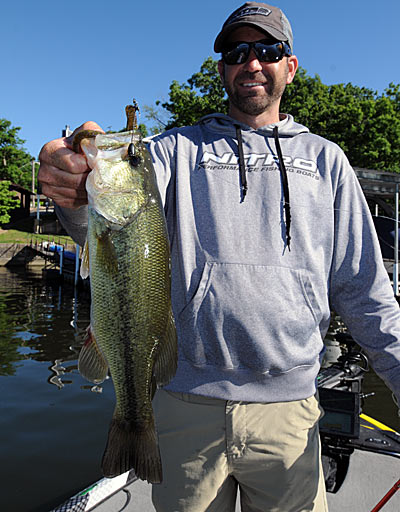
The 2013 Bassmaster Classic qualifier extols the Tokyo rig’s versatility, allowing him to attach more soft plastic baits on it than the drop shot rig. By changing the rig's hook sizes, Scanlon can fish it with various soft plastics ranging from 4 inches to a 10-inch plastic worm.
Scanlon’s favorite lure for the Tokyo rig is a straight-tail plastic worm that he varies the size up to 9 or 10 inches long. “The sky is the limit because there are a lot of hook shapes and sizes that you can purchase,” Scanlon says. “I am typically a worm kind of guy, but I will put a beaver or something like that on it occasionally.” Scanlon will fish a Tokyo rig with a soft plastic beaver or creature baits when he targets bass on spawning beds.
The Lake of the Ozarks guide favors a round bend worm hook for his Tokyo rig, but he suggests you can also use a straight shank hook for flipping the rig. He opts for a 4/0 round bend hook for 6- to 8-inch worms and a 5/0 version for worms longer than 9 inches. For more finesse presentations, Scanlon will downscale to 1/0 or 2/0 hooks.
Scanlon has caught bedding bass in extremely shallow water with his Tokyo rig and bottom-hugging bass as deep as 30 feet. “I usually fish it on the bottom slow and steady,” he says.
Two baitcasting setups allow Scanlon to fish the Tokyo rig in open water or heavy cover. When he wants to make long casts in open water, Scanlon chooses a 7-foot, 1-inch medium-heavy action Bass Pro Shops Johnny Morris Signature Series rod and 7.5:1 gear ratio Bass Pro Shops Johnny Morris Signature Series baitcast reel filled with 14-pound Bass Pro Shops fluorocarbon line. Scanlon uses the same reel spooled with 20-pound Bass Pro Shops Fluorocarbon and a 7 1/2-foot heavy action Bass Pro Shops Johnny Morris Signature Series rod for flipping and pitching the rig to cover.
Throwing the rig during the warmer months has produced the best for Scanlon. “I start throwing it more in late prespawn and have thrown it through the fall until the fish start feeding on shad and moving a little bit shallower,” he says.
The ability to change lures and weights with the Tokyo rig allows Scanlon adjust to fish the rig in any weather and water conditions. “It's so versatile you can switch up for different conditions whether there are clouds or dirty water,” Scanlon says.
The Tokyo rig has produced both quality bass and numbers of bass for Scanlon. “That is what I love about the drop shot, it doesn’t discriminate, and the Tokyo rig is kind of the same,” Scanlon says. “You can catch bass from 6 inches long to 6 pounds on it.”


